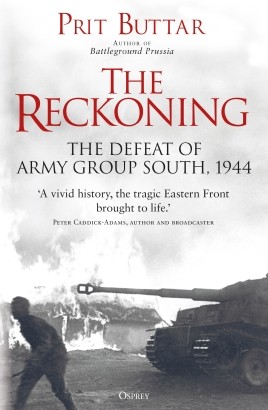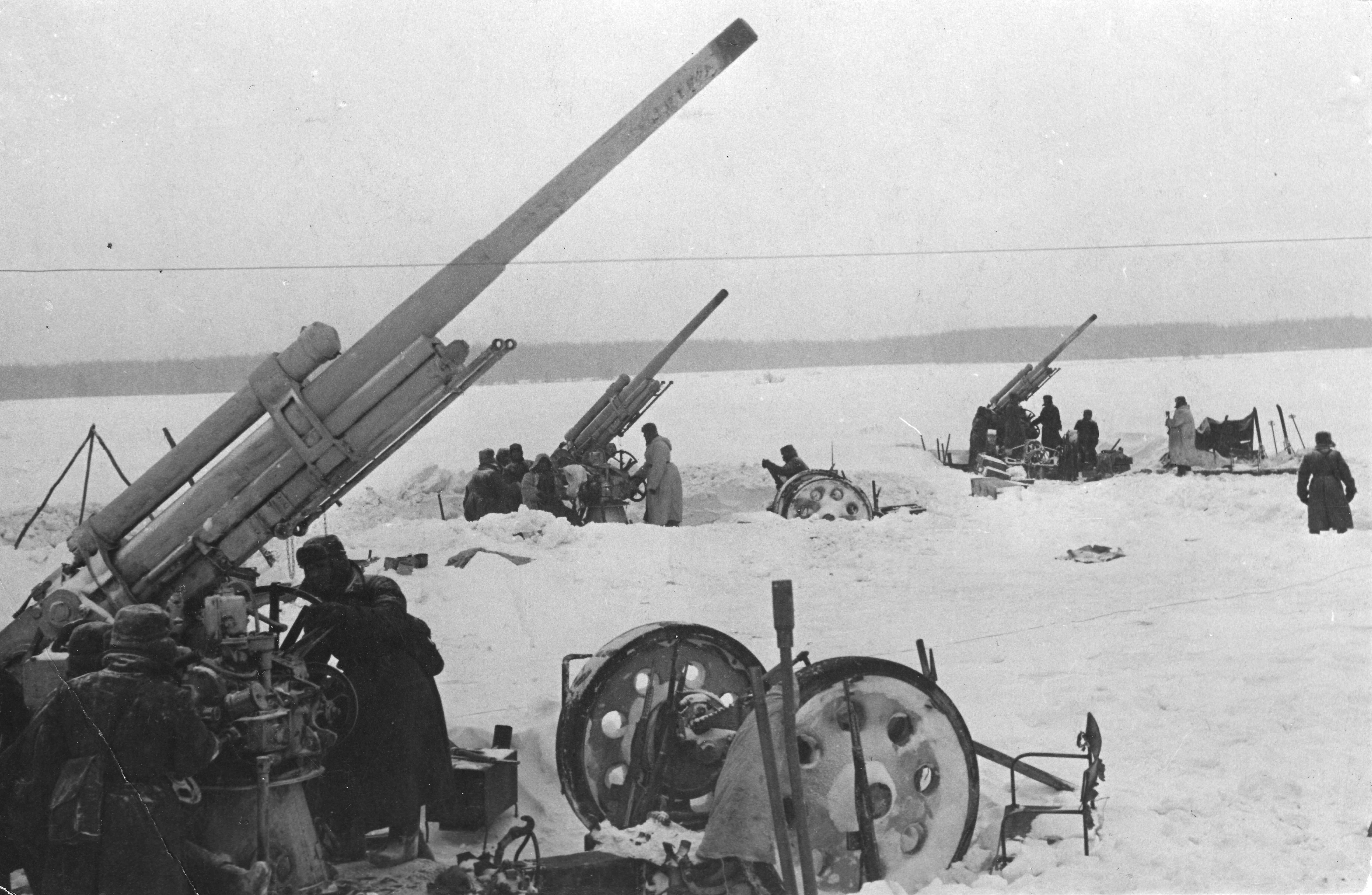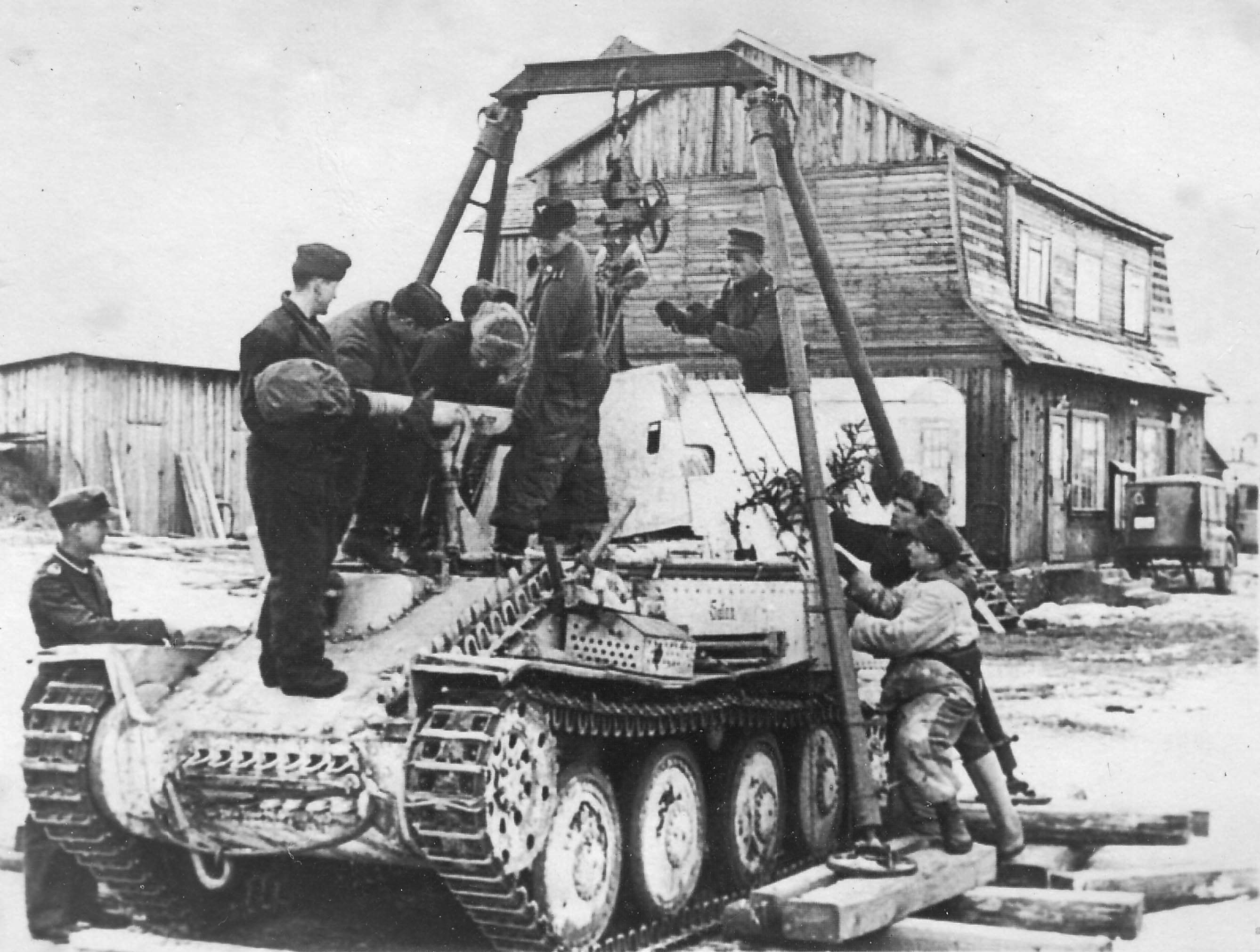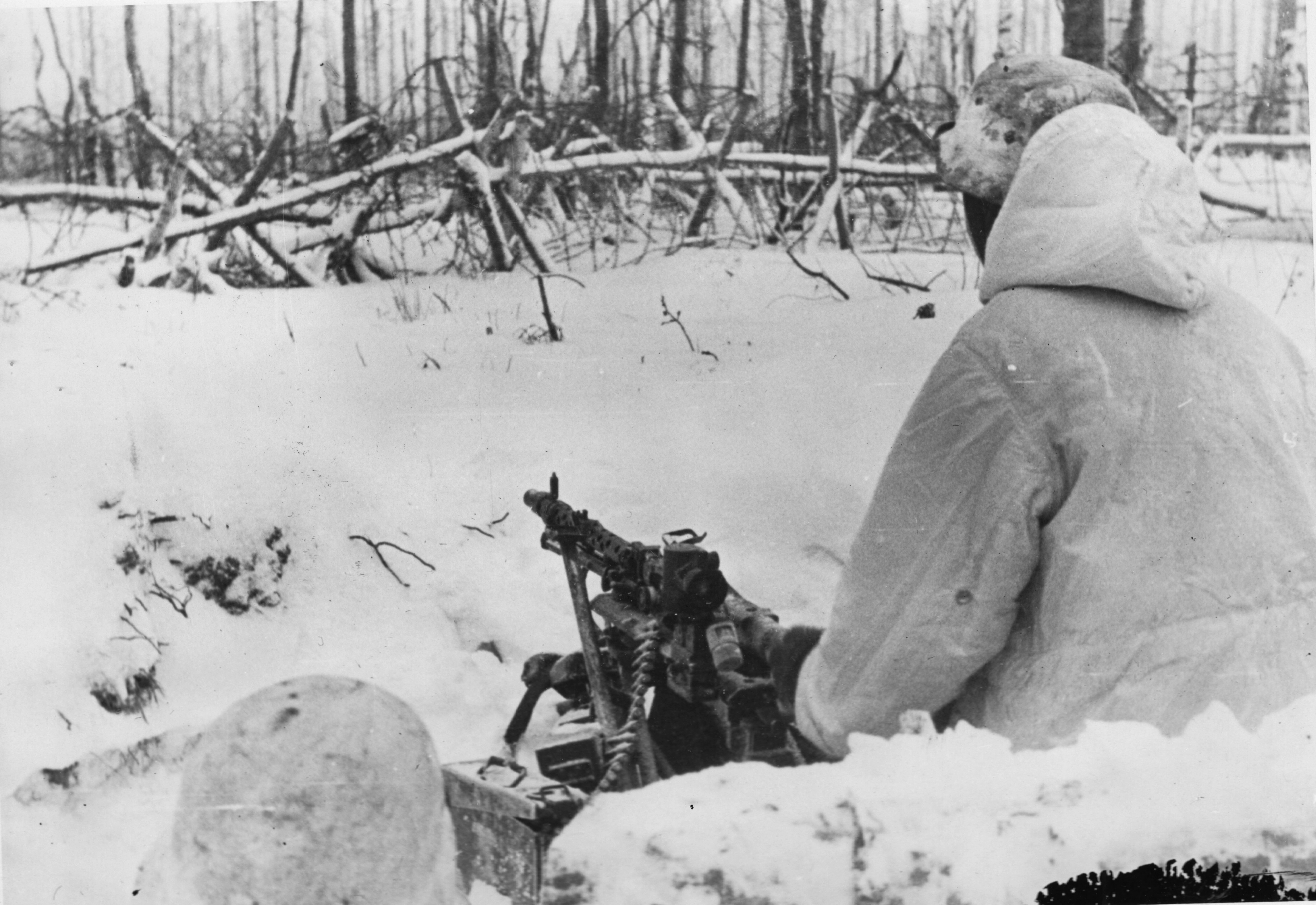The Reckoning: The Defeat of Army Group South, 1944 is a detailed account of the fighting in Ukraine in 1944, making use of the extensive memoirs of German and Russian soldiers involved in the fighting, as well as partisans behind the German lines, to bring the story to life. On the blog today, author Prit Buttar examines some of the myths that arose from the war.

History, it is often said, is written by the victors. The history of the Eastern Front, as portrayed in the English-speaking world, is an unusual example that breaks this rule. This highlights an important principle: whilst the record of events – who did what, and when – is often clear, the manner in which those events are interpreted can give a misleading impression.
The war between Germany and the Soviet Union was vast and dwarfed the conflict on other fronts. The casualties suffered were enormous – the Soviet Union lost over 9 million soldiers, and German and Axis military dead exceeded 5.5 million; in addition, perhaps 10 million Soviet civilians and an unknown number of German civilians died. The Soviet dead (both military and civilian combined) in the siege of Leningrad alone were more than all British Empire war dead from both world wars combined. But understandably, the English-language accounts of the war that emerged in the late 1940s and the 1950s concentrated on theatres where British and American troops had been involved: North Africa; Italy; Normandy and Western Europe; Burma; and the Pacific.
Most of the early accounts of the Eastern Front to appear in the West after the war were in German, written as memoirs by the Wehrmacht generals who had fought there. These accounts emerged at a time when the Soviet Union was no longer part of the great alliance that defeated Germany and was now the enemy of the West. As NATO emerged to face the Soviet Union, there was a need to ‘rehabilitate’ West Germany so that it could play its part in the new alliance, and many former Wehrmacht officers helped create the new Bundeswehr. Inevitably, their experiences in fighting against Soviet forces were of great value to the new alliance and their accounts of the Eastern Front became the basis of the English-language narrative of the war. Soviet accounts were also beginning to emerge, and some of these were translated first into German (in East Germany) and then into English, but these were widely regarded with scepticism and suspicion. Both these Soviet accounts and those written by German veterans were full of inaccuracies (and, on occasion, straightforward falsehoods), but there was far less doubt in the West about the reliability of German accounts than there was about Soviet accounts. The consequence of this was a distorted view of the war on the Eastern Front, which has persisted to modern times. This distortion resulted in several myths, and their lasting impact is worth considering in detail.
The first of these is the view that the Wehrmacht was superior to the Red Army in almost every aspect – its training, leadership, and equipment – but was ultimately defeated by sheer weight of numbers. There can be no doubt that the Soviet Union mobilised huge numbers of men and women to fight against Germany and that Soviet losses were very heavy, but closer scrutiny shows the flaws in this myth. The Wehrmacht of 1941 was a formidable force with highly trained, experienced personnel at almost every level. Against this, the Red Army had little answer at first. Its formations were often poorly configured and despite many flaws being revealed in the war between the Soviet Union and Finland a year before, few changes had been made. The consequence was a string of catastrophic defeats. But with every passing week, the soldiers of the Soviet Union learned and improved. There was a rigorous process of analysing every battle and learning from what had happened, and as the war progressed, these lessons resulted in the configuration of Soviet forces changing constantly. The high casualty rate made it difficult to ensure improvement at all levels, but sufficient veterans continued to survive and implemented all that had been learned. By contrast, the evolution of the Wehrmacht went into reverse. The long-standing tradition of disseminated decision-making, which encouraged innovation and improvisation, was steadily replaced by top-down rigidity. The high casualty rates amongst German NCOs and junior officers eroded the efficacy of German units, and long-standing weaknesses in German force structures – in particular, the relative shortage of anti-tank firepower in infantry units – were exposed in full. Until mid-1943, it was generally reasonable to compare the capability of German units with those of Soviet units at one level higher – thus a German division was the equivalent of a Soviet corps, a German corps was the equivalent of a Soviet army, and a German army was the equivalent of a Soviet front. By the end of 1943, this was no longer the case and whilst a German division still outmatched a Soviet division, it could no longer expect to take on a Soviet corps with complete confidence of success.

A Soviet M1935 76mm gun deployed to shoot down Axis supply aircraft. Very similar to the legendary German ‘88’, it was based on a German design. It also had good anti-tank capability.
(Nik Cornish at www.Stavka.org.uk)
The myth of the virtuoso skills of the German officer corps has also persisted. To a very large extent, this is because it is based upon the memoirs of the officers involved. Few if any German memoirs acknowledge mistakes or failures made by the authors, and little or no credit is given to the growing skill of the Soviet officers who opposed them. It wasn’t just in tactical matters that the Red Army was improving its command and control. From the end of July 1943 until the end of April 1944, Soviet forces sustained an almost continuous offensive across Ukraine, sweeping over the Dnepr, Southern Bug and Dniester Rivers, despite operating at the end of long supply lines that ran across a country deliberately devastated by the retreating Germans. Wars are often won by the side with better logistics, and this was no exception.
The technical superiority of German weapons is another area rich in mythology. There can be no doubt that many German weapons systems had significant advantages over their opponents; Soviet accounts frequently praise the superior optics of German gunsights, for example. But on many occasions, the quest for technical superiority resulted in problems with reliability. The Panther tank has often been regarded as one of the best tanks in the war, but it was constantly plagued by mechanical problems and it was almost routine for German units to lose as many tanks through breakdowns as were lost from enemy action. The Tiger tank that appeared in 1942 and remained in production until 1944 was a formidable vehicle, but its weight made it difficult to use many of the small bridges of Eastern Europe, and although the tank was ultimately replaced by the King Tiger, the original Tiger underwent constant minor changes in design in attempts to improve its reliability. As a result, although 1,354 of these tanks were built, there were never more than 20 that were completely identical. In most cases, the variations made little difference, but on other occasions it was impossible to use spare parts from one version on another version.

The repair of armoured vehicles was vital for the Germans as their losses far outstripped replacements and production. Furthermore, as depots were overrun, equipment that could otherwise have been repaired had to be abandoned, further depleting the panzer formations.
(Nik Cornish at www.Stavka.org.uk)
As the former Wehrmacht officers settled into life in West Germany (and in many cases became officers in the Bundeswehr), there was a tendency for German accounts to brush over the atrocities that occurred on the Eastern Front. This led to the myth of the ‘clean Wehrmacht’ – all atrocities were committed by the SS, and even within the SS there were attempts to portray the Waffen-SS as merely an elite fighting formation. The reality was that almost every unit involved in the fighting on the Eastern Front played a part in the German occupation policies. Whilst some German accounts may simply have ‘looked the other way’, other accounts were deliberately dishonest. In his memoirs, Manstein claimed that he had not passed on the infamous ‘Commissar’ order or similar instructions, but he was successfully prosecuted for war crimes when orders signed by him were brought before the court. This, inevitably, casts doubts upon the veracity of his entire memoir: if he was dishonest about this, how reliable are other parts of his writing, particularly those concerning his private discussions with Hitler?
Manning an MG 34 mounted on a tripod in defence mode, the men of a German outpost stare into the woods ahead of them. Night was the testing time for the nerves of soldiers in such a position, however well-armed.
(Nik Cornish at www.Stavka.org.uk)
Perhaps one of the most enduring myths is the suggestion that had Hitler given his highly skilled generals a freer hand, the outcome of the war might have been different. Many German generals claimed that it should have been possible to fight the Red Army to a standstill, but Hitler refused to allow them the freedom to conduct operations that might have led to such an outcome. This point of view ignores a fundamental truth: there was no prospect of the Allied Powers ever accepting any sort of honourable peace with Germany while Hitler was in power, and this was made explicit in the Casablanca Declaration. In many respects, Hitler understood this far more clearly than his generals. Aware that the Allied Powers would not negotiate with him, Hitler knew that his only hope of winning the war was to knock out at least one of his opponents, and he chose to await the planned invasion of Western Europe – if the British and Americans could be soundly defeated on the shores of France, it might be possible to turn east with sufficient strength to defeat the Red Army. In the meantime, it was imperative that the Red Army was kept as far from Germany as possible. The generals of the Wehrmacht largely saw that this policy was doomed to failure, but were unable to take the next logical step. If Hitler’s plan for a successful outcome of the war was not going to succeed, and there was no other prospect of winning the war, then the only conclusion was to negotiate an end to the conflict to avoid the continuing loss of life. That would have required the removal of Hitler from power, and most of the German officer corps shied away from this, stating that their personal oath of loyalty to Hitler made any overthrow of the Führer unthinkable. But this attitude ignores the fact that the Wehrmacht was not Hitler’s private army – the officers of the Wehrmacht owed their ultimate allegiance to the German people. Manstein, Balck and others wrote in their memoirs that even if Hitler had been removed from power, the consequence would have been chaos and collapse across Germany. This may have been true, but that collapse and chaos would occur in any case in 1945. The only way that it could be avoided was to remove Hitler from power.
With the collapse of the Soviet Union, there was a period when access to Soviet-era documentation allowed for many of these myths to be challenged, and writers like David Glantz led the way in highlighting the growing skill of the Red Army in the second half of the war. We are now surely at a stage where the myths of a superlative Wehrmacht, led by officers of extraordinary genius who were held back only by Hitler and who played no part in the atrocities of the war, can finally be laid to rest.
The Reckoning: The Defeat of Army Group South, 1944 by Prit Buttar is now available in paperback! Get your copy from the website now.



Comments
You must be logged in to comment on this post. Click here to log in.
Submit your comment